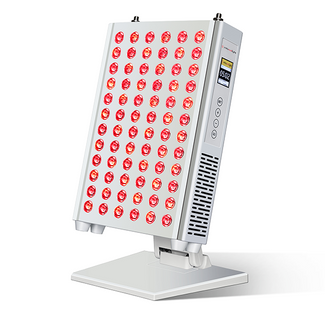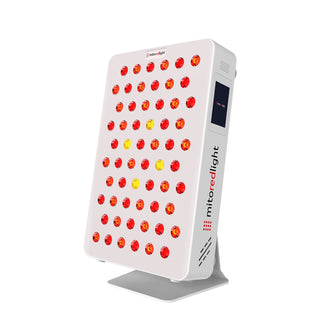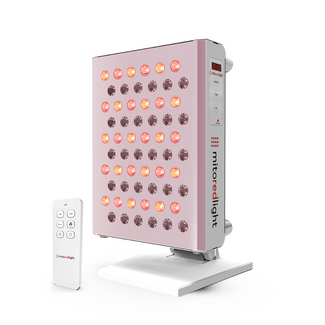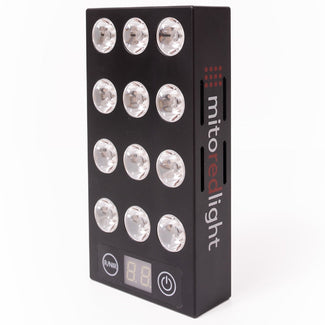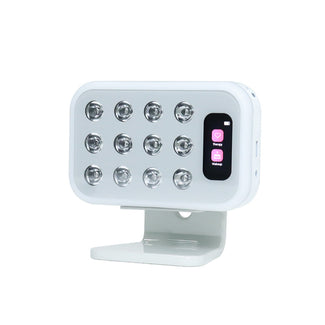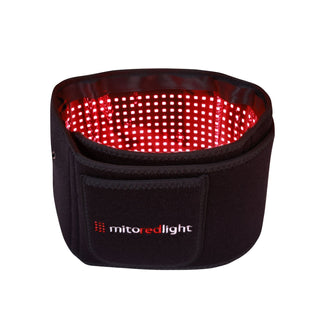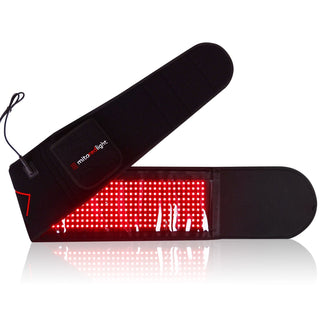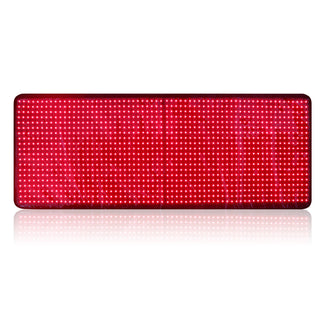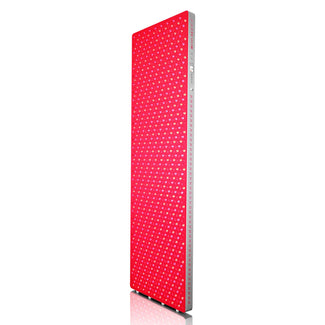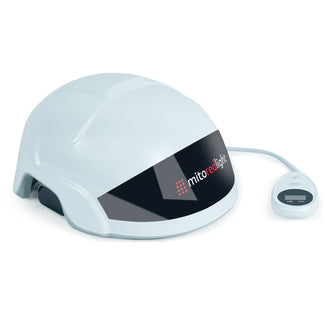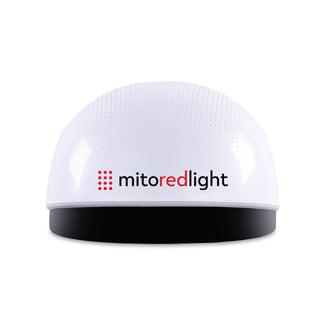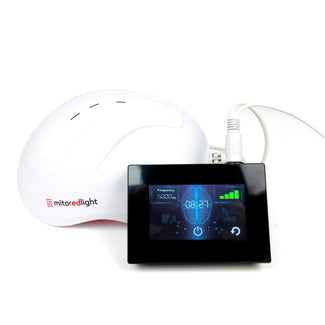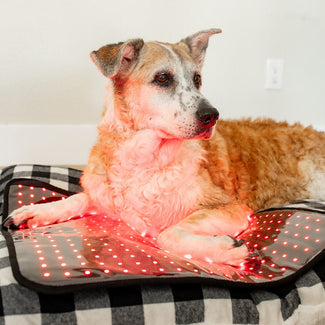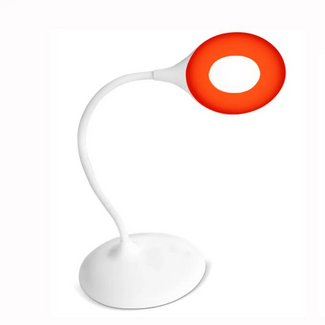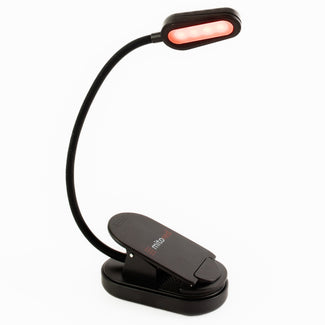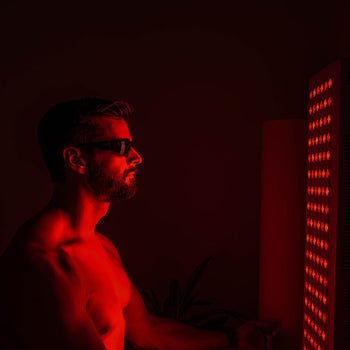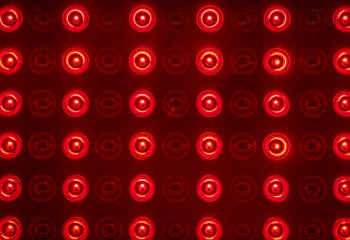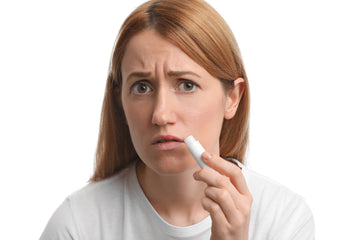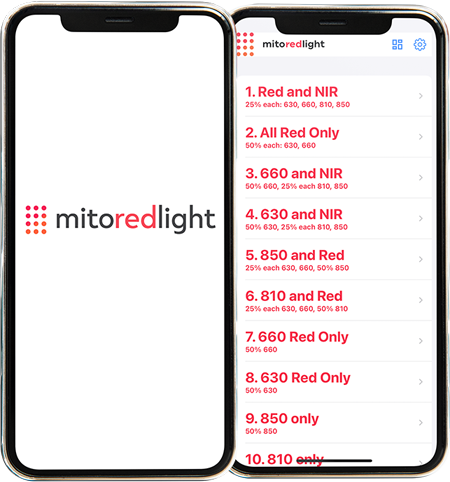By Scott Chaverri
Table of Contents
- What is Vitamin D
- Vitamin D and COVID-19
- What the Science Shows
- What the Experts Say
- Vitamin D and Bone Health
- Getting Vitamin D
- Foods with Vitamin D
- Vitamin D Supplements
- UV Light
- The Reason for this Article - My Recent Vitamin D Results
- Red Light Therapy and Vitamin D
- Skin Protection
- Skin Thickening
- Red Light Therapy
What Is Red Light Therapy?
If you’re looking to enhance your well-being, red light therapy stands as a cornerstone in modern wellness practices. This non-invasive therapy utilizes LED light to deliver a spectrum of therapeutic red and near-infrared (NIR) light, working to help target the skin and deeper tissues.
Unlike the UV rays from natural sunlight that stimulate vitamin D3 production but carry risks of UV exposure, red light therapy offers a safer alternative for potentially helping to support your overall health right from the comfort of your home. It may be able to help support proper ATP production, which is essential for cellular energy and health, without the same adverse effects associated with direct UV light.
Red light therapy stands out for its potential ability to help support healthy collagen synthesis, support overall wound healing, and contribute to wellness in general — keep reading to learn more.
What is Vitamin D?
According to the National Institute on Aging, vitamins are nutrients that your body needs to survive and stay healthy. Vitamin D, also called calciferol, plays an important role in bone health and in regulating the immune system.
Vitamin D is naturally made in the body, but only when skin cells are stimulated with specific wavelengths of ultraviolet (UV) light. These wavelengths of light naturally occur in sunlight, and exposure to sunlight or artificial UV light with the correct wavelengths of light can stimulate the production of vitamin D. Vitamin D is also obtained from foods that contain it, however, there are not many foods that have high amounts of vitamin D.
Once produced, vitamin D is not active until it undergoes two processes that occur in the liver and in the kidneys to change it into the active chemical calcitriol. This active form of vitamin D is what actually creates its positive effects on the body.
While vitamin D is an important nutrient, many people are deficient in vitamin D. It is estimated that one billion people worldwide have a vitamin D deficiency. Scientists have hypothesized that the high prevalence of vitamin D deficiency is due to the decreased time that people spend outdoors in modern culture, decreasing exposure to the sunlight needed to make vitamin D.
Vitamin D and COVID-19
Vitamin D has been shown to be connected with immune system health, and as research into the effects of vitamin D on the body continues to grow, more scientists are coming to accept the concept that vitamin D decreases the risks of viral infections.
What the Science Shows
Since relatively early in the COVID-19 pandemic, the relationship between low vitamin D levels and risk of severe COVID-19 has been an area of interest. Studies have found that those with COVID-19 infections are more likely to have lower vitamin D levels than the average person, leading many to infer that low vitamin D levels increase the risk of getting a COVID-19 infection. A study out of the University of Chicago Medicine found that people with higher levels of vitamin D than normal are at a lower risk of developing COVID-19.
Another study found that people who are closer to the equator are less likely to die from COVID-19. Because being located closer to the equator creates more sun exposure, the researchers believe that this finding supports the concept that vitamin D decreases the risk of COVID-19.
What the Experts Say
Chris D'Adamo, Ph.D., director of the Center for Integrative Medicine at the University of Maryland School of Medicine, recently wrote a COVID-19 prevention guide in which he said, “Vitamin D is one of the most important and powerful nutrients for supporting the immune system. Numerous studies have shown that it helps reduce the risk of colds and flu. Unfortunately, a high percentage of the population is deficient, so daily supplementation (ideally in the form of vitamin D3) offers the best protection.”
Even the renowned Anthony Fauci, MD has said in interviews, “If you are deficient in vitamin D, that does have an impact on your susceptibility to infection. So I would not mind recommending, and I do it myself, taking vitamin D supplements.”
While there is solid research supporting the concept that vitamin D supports the immune system and reduces the risk of developing severe COVID-19, some mainstream sources have expressed skepticism over how helpful it really is. The main argument against it being as helpful as many people believe it to be, is a lack of in-depth research to follow up the initial promising studies. It is notable, however, that vitamin D is readily available and would not provide any company with a lucrative product if it were recognized as a high-quality treatment or prevention strategy.
For a good discussion of the research on this topic, we recommend watching this MedCram video:
Vitamin D and Bone Health
While vitamin D is thought to play an important role in immune health, it also is an essential part of bone health. Vitamin D’s initial recognition as an important nutrient was due to a bone condition called rickets that occurs with vitamin D deficiency. Vitamin D plays an essential role in helping people to absorb phosphorus and calcium, two nutrients that are essential to bone growth, development, and maintenance.
While severe and prolonged deficiencies of vitamin D are needed to create a disease as disruptive as rickets, vitamin D still is an essential nutrient for bone health. Diseases that affect the bone, such as osteoarthritis or osteoporosis, have been shown to be improved in some cases with vitamin D supplementation. Vitamin D plays a very important role in bone health and is one of the most important vitamins or nutrients the body uses to keep its bones healthy.
Getting Vitamin D
While vitamin D is an essential nutrient, there are only a few ways that we can actually get the amount that we need. The three key ways that people get vitamin D includes their food, by taking supplements, or by exposure to sunlight or other UV light.
Foods with Vitamin D
While getting vitamin D through one’s diet can be a healthy way of avoiding a vitamin D deficiency, these options can be quite limited. The food that is the best source of vitamin D is oily fish, like sardines, salmon, and herring. Fish liver, especially, is a good source. Liver, red meats, and egg yolks can also be good sources of vitamin D. Some foods may also be fortified with vitamin D, meaning that vitamin D does not occur naturally in these foods, but is added to them to increase people’s vitamin D intake.
Vitamin D Supplements
Because there are not many good food options that naturally provide vitamin D, it can also be taken as a supplement either by itself or with other vitamins. While this can help people to avoid a vitamin D deficiency, some supplements are not well absorbed.
UV Light
While foods and supplements may be helpful, UV light is the way that our bodies naturally produce our own vitamin D. UV light is divided into three distinct ranges of wavelengths, called bands, based on the properties of each band. Only one of these bands, UVB with a wavelength of 280-315 nm, actually stimulates the production of vitamin D.
UVB light is produced naturally by the sun, but much of this light is absorbed by the atmosphere, with about 5% of it actually reaching the surface of the earth. More UVB light from the sun is available when the sun is directly overhead, as the light has to travel through less of the atmosphere. UVB light is also in greater abundance during the summer months, when the sun is more directly overhead and is present for longer during the day.
An excellent app that can be used to help you know when the sun is strong enough to make Vitamin D is called DMinder.
The Reason for this Article - My Recent Vitamin D Results
The impetus for this article, were the results of recent Vitamin D blood tests that I had done.
On March 19,2021 I had a Vitamin D blood test done, and the results were quite surprising to me. My Vit D test came back at 86.4 ng/mL which is exceptionally high - abnormally high even.
Here's the thing though - I do not take Vitamin D supplements. Nor do I take any supplements that contain even moderate amounts of Vitamin D (such as cod liver oil).

I was so surprised at these results, I thought there was a good chance there was an error. So, I decided to re-test one month later. My results came back at 77.8 ng/mL.

Prior to these tests, I would have thought that the only way for anyone to have levels this high would be to take high-dose Vitamin D supplements.
So what's going on? What elements of my lifestyle are driving this? It is likely a combination of factors. I have a pretty consistent and purposeful daily routine when it comes to light exposure:
-
Upon waking: Immediately go outside and spend 5-10 minutes in direct sunlight
-
8:30am Get to the office and do 8-10 minutes of whole-body red light therapy
-
11am - 1pm: Spend 10-15 minutes walking outside in the Arizona sun with my shirt off
-
Sunset: Try to watch the sunset or be outside around sunset when possible
-
After Sunset: Wear blue-blocking glasses and minimize bright light exposure (especially blue light) and/or screen time.
Red Light Therapy and Vitamin D
While red light therapy may create many beneficial effects, the wavelengths of light that it provides are not the same UVB wavelengths that stimulate the production of vitamin D. Recent research, however, shows that while red light therapy does not create vitamin D itself, it may prepare and protect your skin in a way that optimizes the effects of UVB light. Red light is more abundant at sunrise and sunset, and scientists hypothesize that our bodies are equipped to use the morning light to optimize the UVB light from sunlight during the day.
So, could my morning routine of sun exposure and red light therapy be priming my skin to more effectively produce Vitamin D the few minutes I am outside during mid-day?

Skin Protection
Red light is made up of longer, low-energy wavelengths of light that penetrate far deeper than high-energy, shorter wavelength light. In a study published in the Journal of Photochemistry and Photobiology (B), researchers found that red light and near infrared light offered protection against high-energy light. After exposing a test subject’s arm to red and infrared light prior to sun exposure, the sunburn that developed was lessened based on how long the wavelengths of light were that the test subject was exposed to beforehand.

The protective effects of red light may enable people to safely be exposed to sunlight for longer without worrying about the damage that it could cause to their skin. This, in turn, increases the time that UVB light can stimulate the production of vitamin D.
Skin Thickening
In addition to offering skin protection, studies have also found that red light therapy may contribute to skin thickening. The process that people use red light therapy for its potential ability to help reduce the appearance of wrinkles and enhance skin health is thought to make the skin thicker. This thickening is directly related to support for the volume and number of cells that absorb UVB light and produce vitamin D.
Red Light Therapy
While red light therapy itself does not create vitamin D, it may create an environment where the skin is more able to produce it. Scientific studies show that red light therapy may be able to help protect the skin from the potential damage that sunlight can cause, making it safer to be exposed to sunlight and increasing the production of vitamin D. Red light therapy may also support the number of cells that produce vitamin D, maximizing the time spent in sunlight.
With Vitamin D being so important for overall health and wellness, this will be an ongoing area of inquiry for us here at Mito Red.
Related Articles:
- What Is Red and Near Infrared (NIR) Light Therapy?
- Red Light Therapy Buyer’s Guide
- Everything You Need to Know About Red Light Therapy and SKIN
- Medical School Professor Describes How Sunlight Affects Health
DISCLAIMER: Mito Red Light devices are not clinically proven to diagnose, treat, cure, or prevent any medical conditions. Mito Red Light devices are Class II general wellness devices aimed at affecting the body through topical heating and supporting cellular function. The scientific studies referenced in this article are for informational purposes only. To see a list of precautionary warnings and contraindications, click here.


